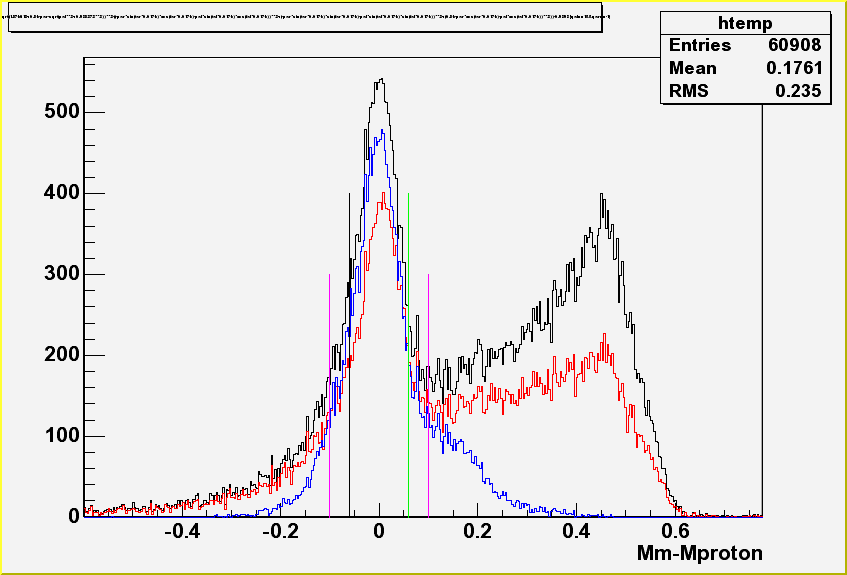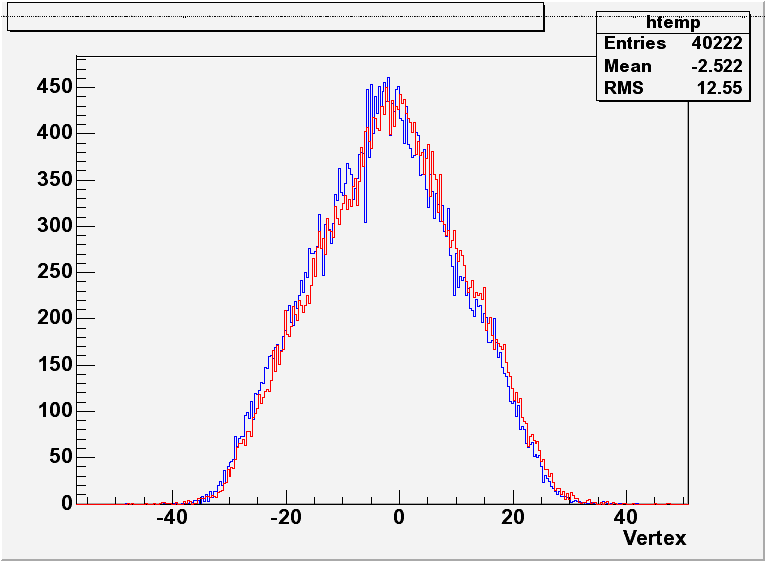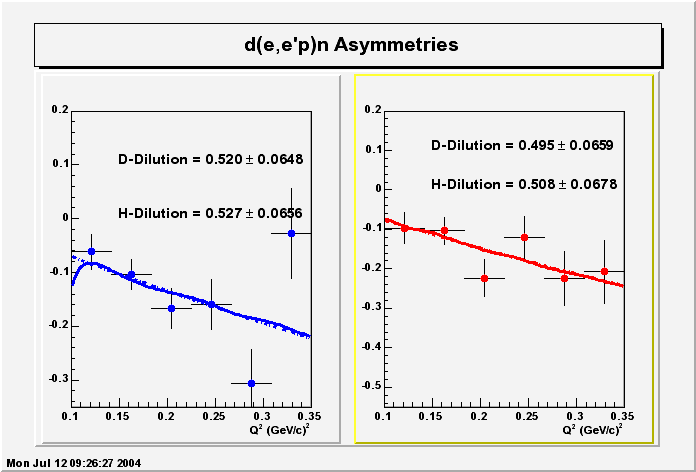attachments
-- ________________________________________________________________________________ Tancredi Botto, phone: +1-617-253-9204 mobile: +1-978-490-4124 research scientist MIT/Bates, 21 Manning Av Middleton MA, 01949 ^^^^^^^^^^^^^^^^^^^^^^^^^^^^^^^^^^^^^^^^^^^^^^^^^^^^^^^^^^^^^^^^^^^^^^^^^^^^^^^^On Mon, 12 Jul 2004, Electronic Log Book wrote:
> Operator: tancredi > > > beam polarization: 70.5+-0.7 / -66.7 +- 0.7 false asym: 1.8 +- 0.5 > average beam polarization: 68.6 +- 0.5 % > > Polarized ABS runs starting from sunday 07/11 at 11.20 am > > Runs 8773 8775-8782 8784-8791 8793 8795-8798 > > fitted hPz : 0.61 +- 0.05 (Left,perp) 0.53 +- 0.05 (Right, para) > Cut set1 |Mm-Mproton|<0.06 0.3<betaProton<0.8 + CCcut > file: asym1.gif > fitted hPz : 0.57 +- 0.04 (Left) 0.55 +- 0.04 (Right) > Cut set2 |Pm|<0.2 |W-1.91| <0.1 no betaProton cut + CCcut > file asym2.gif > > In both case the L-R average target polarization is 82 +- 4 % +- 5 % > The first error is the fit (mostly statistics). The second error is *my* estimate > of the systematic/analysis-dependent error at this point (see below). > There is no montecarlo or model error. > > Until all montecarlo issues are solved all polarization results are obtained > ONLY by comparison with a "point-calculation" of the asymmetry. Note while > we had some problems with the D2 montecarlo (inherently much more complex) , if I remember correctly the difference between point-calculation/montecarlo > was not a big effect (for BLAST) in hydrogen runs. > > ================ > > Shown in the next plots are the cuts, applied to the data : > > I prefer cut set #2, but I just want to emphasize what systematic uncertainty to expect due to different choices. This is discussed below. > Note that with cuts #2 the L/R sector agree much better (and this statement has > a 70 % chance to be significant) > > 3rd attachment: (Mmass - Mproton) distribution (Mtgt= Mdeut, Mx = Mproton) > > black = all data with +1, -1 charges > red = black + proton beta cut > blue = black + |pmiss|<0.2 cut > > 4th attachment: Invmass distribution, colors as above > > Note that Mm cuts of 0.06 (green) and 0.1 have been used as the default, with > a beta cut (i.e. acting on the red curve). An alternative is to cut pmiss<0.2 > and select events on invariant mass W, independently of the beta detemination. > Note that the calculation of the pathlenght and hence beta had an error (bug) that only recently (june) has been discovered and tried to fix (thanks to chris) > > For yaks, I also show the Z distribution. Note no explict z-cuts and all events > reconstruct nicely in the cell. > > Finally, the phi-e- distributions for the L, R sector show a potential problem: it > is asymmetric which is likely to be a recon efficiency problem. However this becomes an analysis problem too since you can't rely on phi-symmetries and cancellations (e.g the tensor spin correlation parameter). Cutting in a narrow > +- 5 deg range should show no change. > > However I do get a lower average polarization result (last attachment, asym3.gif) > I am forced to keep this result, which yields <Pz> of 75 +- 5 % > > I think it safe to say that there is 5 % systematic uncertainty on top of any hPz > determination. Better statistics will help too. > > P.S. > Program used: macros/Deuterium/show_deep_asym_V.C > > > > > >







This archive was generated by hypermail 2.1.2 : Mon Feb 24 2014 - 14:07:31 EST